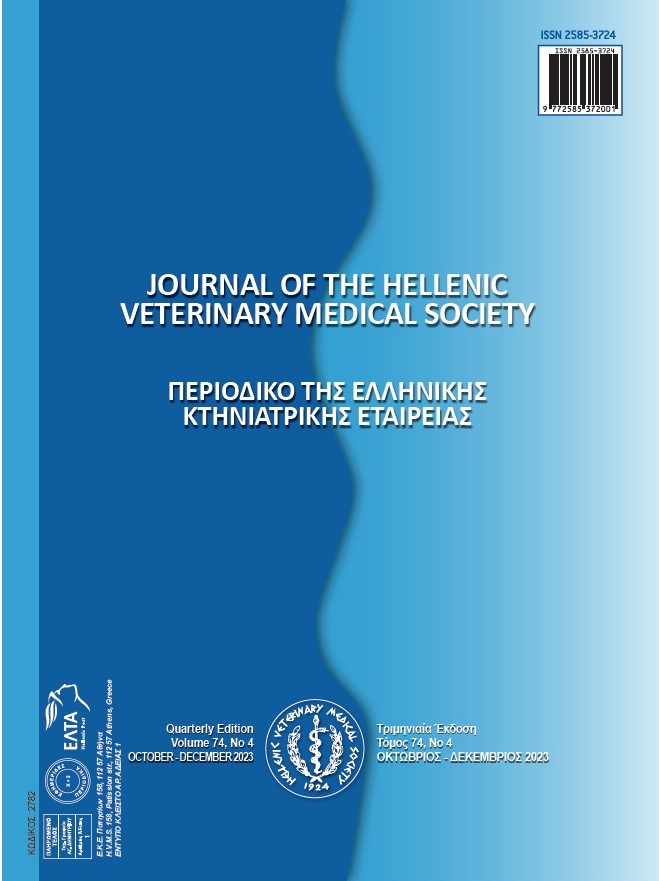A study of biochemical changes in river buffaloes (Bubalus bubalis) naturally infected with Anaplasma marginale

Abstract
Anaplasma marginale as an intracellular rickettsia, endemic in tropical and subtropical regions of the world. This study was performed to determine A. marginale infection, molecularly, and to investigate its effects on some serum biochemical parameters in river buffaloes referred to Ahvaz abattoir, Southwest Iran. A total of 103 apparently healthy river buffaloes were randomly sampled. Whole blood samples were subjected to PCR analysis and blood smears were examined microscopically for the presence of Anaplasma inclusions. Serum biochemical parameters including total protein, albumin, glucose, urea, iron, total bilirubin, total cholesterol, Calcium, Phosphorus and Magnesium concentrations, aspartate aminotransferase (AST) and alkaline phosphatase (ALP) activities and also serum electrolytes comprising Na and K were assessed. The results revealed that 16 and 32 samples were infected with A. marginale in microscopic and PCR assessment, respectively. Serum biochemical analysis showed no significant difference between A. marginale infected and non-infected buffalo groups. It can be concluded that infection with A. marginale does not lead to much pathogenicity in river buffaloes, so that in infected animals, no clinical signs or abnormalities in the performance indicators of various organs can be detected at the laboratory level. However, the role of this species as a reservoir of this microorganism in nature and in the epidemiology and transmission of anaplasmosis to other species remains significant. Buffaloes can be a substitute to raising cattle in regions with high occurrence of anaplasmosis.
Article Details
- Zitationsvorschlag
-
Jalali, S., Nikvand, A., Gharibi, D., Razi Jalali, M., Yazdkhasti, M., & Kaviani, F. (2023). A study of biochemical changes in river buffaloes (Bubalus bubalis) naturally infected with Anaplasma marginale. Journal of the Hellenic Veterinary Medical Society, 74(2), 5517–5522. https://doi.org/10.12681/jhvms.27125 (Original work published 4. Juli 2023)
- Ausgabe
- Bd. 74 Nr. 2 (2023)
- Rubrik
- Research Articles

Dieses Werk steht unter der Lizenz Creative Commons Namensnennung - Nicht-kommerziell 4.0 International.
Authors who publish with this journal agree to the following terms:
· Authors retain copyright and grant the journal right of first publication with the work simultaneously licensed under a Creative Commons Attribution Non-Commercial License that allows others to share the work with an acknowledgement of the work's authorship and initial publication in this journal.
· Authors are able to enter into separate, additional contractual arrangements for the non-exclusive distribution of the journal's published version of the work (e.g. post it to an institutional repository or publish it in a book), with an acknowledgement of its initial publication in this journal.
· Authors are permitted and encouraged to post their work online (preferably in institutional repositories or on their website) prior to and during the submission process, as it can lead to productive exchanges, as well as earlier and greater citation of published work.




